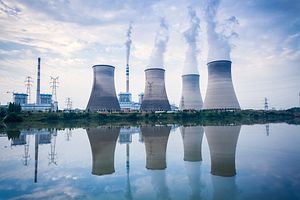Chinese President Xi Jinping, at a White House summit meeting with U.S. President Barack Obama, announced Friday that China will work toward implementing a carbon emissions cap-and-trade system. The plan will be launched in 2017, and will help to consolidate regional carbon markets in China. The cap-and-trade system will cover heavily-polluting industries such as power generation, iron and steel, chemicals, building materials industries. This marks a significant step forward in combating climate change, as China is the largest carbon dioxide emitter in the world.
A cap-and trade system was first announced by China’s State Council in October 2010; carbon trading was named as an important component of China’s Twelfth Five Year Plan. As with many other policies, the national cap-and-trade policy is not a spur-of-the-moment announcement, but rather an effort that has been years in the making. Even as cap and trade pilot schemes were put into place, a national carbon trading scheme was slated to come into effect between 2016 and 2020, a deadline which has now been narrowed to 2017.
Cap-and-trade systems around the world have been successful in reducing emissions. Among them are the EU Emissions Trading System, the Regional Greenhouse Gas Initiative in the Northeastern United States, and schemes in South Korea, California, and Quebec.
At present, China’s cap-and-trade systems do not address price distortions in the nation’s socialist economy. Electricity prices continue to be controlled, encouraging electricity consumption. What is more, allocation based on grandfathering has resulted in higher standards for newer firms. Double-counting of emission allowances for both consumers and producers has produced an inefficient supply of allowances, and most allowances are currently free rather than sold at auction. China’s cap-and-trade system is also relatively nontransparent in terms of giving out allowances and monitoring the effectiveness of the cap-and-trade schemes.
These issues presented in China’s pilot cap-and-trade programs must be addressed in the national program. The National Development and Reform Commission has made a general statement that it will attempt to improve the regulations surrounding carbon trading schemes.
It should also be kept in mind that a cap-and-trade program cannot be considered a standalone policy in the war against climate change. Cap-and-trade programs have limitations, since not all emissions are easily monitored; they come from various sources and cannot be evaluated and “capped.” Programs that place an emphasis on moving to renewable energy, reducing household use of fossil fuels, improving mass transit, and enhancing energy efficiency must complement any cap-and-trade scheme.
Despite producing the world’s largest volume of emissions, China has been a leader in the use of renewable energy. China’s carbon-curbing plan and the effectiveness of its proposed emissions targets will among the important topics of discussion at the UN climate talks in Paris later this year.

































